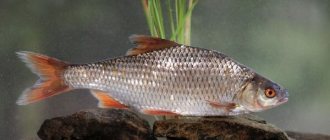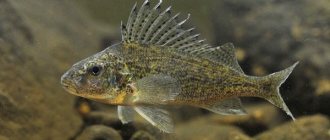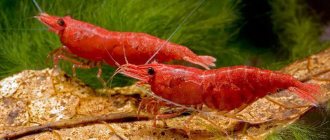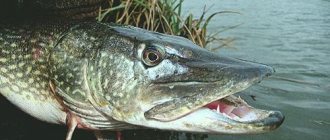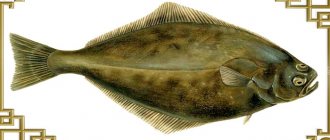Who doesn’t know what catfish aquarium fish look like? Not only are they found all over the world in natural bodies of water, they are also one of the most popular aquarium inhabitants. Of course, the bizarre large head and funny mustache leave few people indifferent. But before you place such a predator in your aquatic world, it is important to very carefully study the specific species and the conditions of its detention. Otherwise, not only can you lose a large number of small fish, but also get a huge fish in a year.
Description
Catfish are one of the most ancient species of fish that inhabited the waters of our planet 70 million years ago. This is a huge genus, which includes more than 2000 different species. Most are freshwater, although some species are also found in the ocean. Many aquarium catfish are bred through selective breeding, but most of the popular species are natural.
The main feature of all catfish is the absence of scales. But their body does not remain “naked”, but is covered with a special shell of bony plates. These fish also have whiskers elongated into long threads. This is not just an external feature, but an important part of the body. Since catfish lead a bottom-dwelling lifestyle, they use their whiskers to feel and taste surrounding objects and soil.
Because catfish often dig and pick up food from the bottom, in the aquarium industry they are called the “orderlies” of the aquarium. However, not all species have such fame, but only certain ones, for example, the speckled catfish.
As for appearance, of course, all types of aquarium catfish differ from each other both in size and in individual features. In most cases, they have a protective “camouflage” coloring to match their habitat. Some reach quite large sizes and are dangerous predators for other aquarium inhabitants. However, what cannot be taken away from catfish is their funny faces. It is a pity that many of them are nocturnal and appear in sight only occasionally.
Behavior and nutrition
Catfish lead a bottom-dwelling lifestyle. They carefully examine the surface of the soil for the presence of food. These fish, in a sense, are “orderlies”, picking up leftover food from the bottom. Despite this, an aquarium containing these original creatures requires a high degree of cleaning. Most of them dig in the ground, raising clouds of suspended matter from the silt. That is why they require a good filtration system to keep the water in the aquarium clean. Aquarium cleaner catfish mostly lead an evening or nocturnal lifestyle. So, in bright light you will not see them often. They feed on all food that has fallen to the bottom, without exception.
Varieties
The varieties of aquarium catfish simply amaze the imagination. However, do not be fooled by the fancy appearance of the fish; carefully study the description of the species you like. For example, some representatives may even be poisonous. The thorn prick, although not fatal to humans, can be quite painful. Find out what the most popular species of aquarium catfish are, as well as their photos with names right now.
Clarias
Do you have a large species aquarium? Then the spectacular catfish of the Clarias Angolan subspecies will become its excellent inhabitant. This voracious predator can reach the size of a teenager's hand. But it is very impressive thanks to its beautiful marbled color and large dorsal fin that stretches along the entire body. Not fussy about care and water quality.
Glass
The ghost catfish, or simply the so-called glass species, is perhaps the most peaceful and calm inhabitant of the aquarium. In addition, he is very unusual - he has an absolutely transparent body, through which one can see the internal organs and even the skeleton. However, it is very difficult to keep such a miracle of nature. Glass catfish are picky about water quality, get along only with peaceful neighbors, live exclusively in schools and are vulnerable to disease. The aquarium needs good vegetation.
We offer you to see in more detail what such an unusual fish looks like in the next video (Yuri Sakharov).
Flathead
The flathead catfish is described in appearance as an African killer whale. They have three pairs of whiskers and a well-developed adipose fin. Some of their species are distinguished by their bright colors, which is why they are loved by many aquarists. As for keeping them, these catfish are nocturnal predators, so they get along well in the company of large fish.
Brocade
This beautiful visitor from the Orinoco River got its name because of the black or brown spots that resemble brocade. They also have a large dorsal fin that resembles a sail, and their mouth is a single large sucker. Recently, this type has been very popular, but it causes a lot of trouble for beginners. He loves to scrape snags and eat vegetation, moves reluctantly and is very phlegmatic, clings to other sedentary fish. Not suitable for a small aquarium as it grows up to 35 cm in length.
Synodontis
This African subspecies gained particular popularity among our aquarists about 10-15 years ago. Many of its representatives are quite large, but peaceful and calm. Their large head with three pairs of long mustaches, as well as their torpedo-shaped body, attracts attention. They come in different colors, even black with polka dots - angelic synodont. But among beginners, small changelings are in particular demand - catfish that can swim belly up. They collect insects on the surface of the water and also perfectly clean the bottom.
Corridoras
Corydoras make up a fairly large group of catfish species. However, some of them, for example, those living in the waters of the Amazon, have not yet been sufficiently studied. Corydoras are very popular in freshwater aquariums, as they are peaceful and have an active behavior. It is especially interesting to watch them if they live in a flock. It can live calmly in muddy water, but they love a soft and slightly acidic environment.
Tarakatum
The Brazilian cockroach has a long body, and the male's chest is decorated with a powerful orange bone spike. These catfish love to build nests under the leaves of plants. Quite a pretty species, but due to the thorn it is rarely kept among beginners.
Ancistrus
Another Brazilian subspecies of dark catfish with light spots. They grow to medium sizes - approximately 14-15 cm and spend most of their time clinging to plants or the glass of the aquarium. It is phlegmatic towards other inhabitants, so it can easily get along in a common family and is suitable for an aquarium.
Loading …
Proper care and maintenance
For normal living, catfish need to simulate as much as possible the environment in which they lived previously. The first thing you need to pay attention to is the aquarium. You need to choose a container that is as spacious as possible, since catfish can reach 30 centimeters in length.
The bottom of the aquarium is also an important stage. It is better to choose sand or soft gravel as a soil. It is necessary to place small stones on it where the catfish can rest. It is important to build a place where the fish can hide. Small driftwood that should be placed at the bottom is ideal for these purposes.
Feeding catfish is quite simple. They need to purchase special food in tablet form. Catfish eat only in the lower layers of water. Food in the form of tablets prevents theft from other fish and allows catfish to eat normally. These fish are omnivores and can be given any food. It is best to carry out the last feeding immediately after sunset, since these fish are active only at night.
Although catfish are very hardy, they can suffer from various diseases. It is necessary to carefully monitor their condition. The main symptoms that indicate the presence of the disease in pets:
- sharp deterioration in appetite;
- enlarged swollen abdomen;
- pressed fins;
- the skin is inflamed or discolored.
If at least one sign is detected, then it’s time to contact a specialist.
With regular care, catfish will become the best silent inhabitants of a home aquarium. All that remains is to choose the most interesting species of these aquatic inhabitants.
Catfish only eat at the bottom of the aquarium
Care and maintenance of fish
Aquarium catfish, as we have already said, represent a wide group of fish, therefore the conditions of care and maintenance differ for many. In general, they are unpretentious, grow well, and many species reproduce without problems in artificial conditions. If you are new to aquarium keeping, then do not chase exotic species from photos. Buy the most common ones, which are always on sale in pet stores.
If we talk about average maintenance rules, then aquarium catfish prefers normal conditions with water hardness of 6-12°, temperature from 22 to 26 degrees, neutral acidity. Also, due to the fact that these fish can breathe through their skin, they are not demanding on the oxygen regime. But most catfish are nocturnal, so it is preferable to feed them in the evening. Thanks to special receptors, they easily find food even in the ground. The best food for them are invertebrates; bloodworms, tubifex, and enchitrius are also suitable.
It is desirable that these mustachioed inhabitants can feel comfortable and place all kinds of shelters, snags and a lot of vegetation in the aquarium.
Rules for keeping aquarium catfish
In order for your catfish to live and reproduce in an artificial environment, you must follow a few simple rules:
- There must be a flow of water in the aquarium; it can be created using a powerful filter
- every week you need to change half the volume of water to fresh
- the bottom needs to be decorated; driftwood, grottoes, and castles are suitable for this
- Food in the form of tablets is best suited for all types of catfish, since most of them feed on the bottom
- If you have fry, they cannot be transplanted into a community aquarium until they grow up
- catfish require vegetation, including floating
Reproduction
Have you got catfish and want to get offspring? In general, breeding these fish is not difficult, but there are some species that are sensitive to changes in the aquarium environment and here everything depends on your experience. Most popular species reproduce simply by placing sexually mature individuals in a separate container. Catfish have large fry and there are no problems with feeding them. They feed either on industrial fry food or cut up tubifex.
Types of catfish
There are more than one and a half thousand species of catfish, but not all of them have gained great popularity for keeping in an aquarium. The most favorite species among aquarists include Ancistrus, Corydoras, Otocinclus and some other varieties of catfish. Which fish to choose depends on the preferences of the owner of the artificial pond.
Ancistrus for beginners
Ancistrus belongs to the chainmail family. Its Latin name is Ancistrus. But this family also includes about 30 species. Very often its representatives are called stickers, cleaners and suckers. Ancistrus is loved for many reasons:
- They clean the aquarium perfectly.
- Unpretentious in content.
- Their suction cup-shaped mouth gives them the ability to eat small algae that grow on aquarium glass and decorations.
- Unique behavior.
Catfish require certain living conditions. The temperature in an artificial reservoir should be around 20-28 °C, acidity - 6-7.3, and water hardness - up to 10.
The average life expectancy of Ancistrus representatives does not exceed 7 years. The fish are small. As a rule, their length does not exceed 10 centimeters.
Catfish can be kept with many other fish, but it is not advisable to house them with cichlids. The latter are very aggressive in nature and can eat the fins of catfish.
For several fish you will need an 80 liter aquarium. The bottom should be replete with various shelters - stones, snags and vegetation.
Catfish get along especially well with cichlids
Cleaners eat plant foods. They are excellent at eating growing algae from decorations, but they also need to be fed with food, which is sold in large tablets. Catfish are also great at eating scalded spinach and can gnaw on driftwood.
Catfish corridors
The fish, which bear the Latin name Corydoras, are considered the most popular. This genus includes a lot of representatives from the smallest specimens to representatives of impressive size. The choice of colors is also quite varied. There are golden, yellow, beige, spotted and purple fish.
Corydoras catfish are very social and do not like to be alone
It is not recommended to keep Corydoras alone. These fish are very social. To avoid exposing catfish to loneliness and stress, it is necessary to house them in at least 5 specimens. Catfish are very active. During the daytime, they constantly swim and rest in the thickets. The most popular types of aquarium catfish are:
- Golden.
- Shterba.
- Panda.
- Adolf.
- Work.
- Speckled catfish.
These are not all the types that can be purchased. There are many more specimens intended for keeping at home.
Otocinclus babies
There are many species of catfish belonging to this genus, but Otocinclus affinis is most suitable for keeping in an aquarium. Most likely, this is what the store will offer first.
Fish of the genus Otocinclus are the smallest among all types of aquarium catfish. Their length does not exceed 2-3 centimeters. Most often they have a light back, white belly and clear black stripes on the sides.
Otocinclus grow no more than 2-3 cm in length
Keeping these catfish is very simple, but you must follow some rules. Otocinclus are very sensitive to water quality. It is necessary to ensure that the temperature does not change and the water is constantly saturated with oxygen.
If there are frequent temperature changes in the water, the catfish may experience severe discomfort and stress. This can subsequently lead to death.
Catfish feed mainly on algae, including dry algae. For variety, you can add small pieces of zucchini. But you need to make sure your pets eat them. If the catfish have not shown interest in them, then the vegetables must be removed from the bottom, otherwise the water may spoil. Otocinclus go well with other types of fish. They get along well with Corydoras.
https://youtube.com/watch?v=KCnpzwgiO6k
Glass representative of catfish
Glass catfish is considered the most amazing and unusual species. It is distinguished by a peculiar body that allows you to see its bones and entrails. The homeland of catfish is the islands of Borneo. A representative of this species has a body that does not exceed 10 centimeters in length. The skin has no scales, but is colored pearlescent.
The fish got its name not only for its body, but also for its particularly fragile health. Getting it from the store to the aquarium is already a problem. Catfish often die during transportation. That is why it is necessary to pay careful attention to caring for them.
Glass catfish have a special body structure
These pets require high-quality water with moderate acidity and hardness. The temperature should be between 21−26 °C. Fish prefer live food, but they can be accustomed to artificial food. During the retraining process, they need to be given shrimp and insects.
Representatives of glass catfish are very friendly to other species of fish. They are also very social. To maintain it, you must purchase two or more copies at once. When one of the catfish dies, you need to immediately buy a new one. If the fish is left alone, it may die.
The aquarium should be replete with plants and various decorations. Without decorative elements, a catfish will not be able to feel completely safe.
Sinodotis changeling
The fish got its name for a reason. These types of aquarium catfish swim exclusively in an inverted state, that is, with their belly up.
Changeling catfish swim belly up
Representatives of Sinodotis are characterized by a beige color and the presence of two antennae near the mouth. The caudal fin is very similar to a fork.
For changelings to thrive, the water temperature in the aquarium should be between 22 and 28 °C. The pet's diet should include live and dry food in equal parts. It is advisable to keep these catfish in a group of 4 individuals.
The requirements for the aquarium are the same: it must be spacious and replete with driftwood, stones and vegetation, where the catfish can hide while resting.
Representatives of the Sinodotis shifters are the calmest. They can live with any other species of fish. The best neighbors for them are corridors.
Tiger pseudoplatistoma
This type of catfish is the most exotic and the most difficult to care for and maintain. The fish is quite impressive in size. Its second name is destroyer. Due to its timid nature, it can begin to rush around the entire artificial reservoir, demolishing everything in its path. Catfish may even be afraid of aquarium maintenance. It is important to always close the lid as Pseudoplatistoma has a habit of jumping out of the water.
Tiger pseudoplatistoma is a large species of catfish that does not get along well with other species
Keeping it in an aquarium with other small fish is a bad idea. This catfish is predatory and can swallow anything that is smaller in size.
Pseudoplatistoma has a brindle coloration and a long body. To support an adult pair, you need an aquarium of 1 thousand liters. The bottom of it needs to be covered with stones. Gravel is not suitable in this case, since there is a possibility that the catfish will eat it and clog its stomach. The aquarium should contain driftwood and depressions where the pseudoplatistoma can rest.
Protein foods are most suitable for catfish
You can feed catfish with any protein food. Small viviparous fish are great, but you need to make sure they look healthy, otherwise there is a risk of infecting your pets with serious diseases. It is best to limit yourself to shrimp, earthworms and krill meat. It is necessary to carefully monitor feeding so that the fish does not become obese.
Keeping this aquarium spotted catfish is extremely difficult. He can live up to 20 years. Very often, fish are purchased in the hope that in the future it will be transplanted into a larger aquarium. But often this ends with the catfish simply being disposed of. This is also very difficult to do: zoos are full of offers, but ordinary hobbyists simply don’t have such large aquariums. Breeding these specimens is almost impossible at home.
https://youtube.com/watch?v=xBXBKivXTgI
Catfish diseases
Aquarium catfish, despite their unpretentiousness and ease of care, are also susceptible to diseases, like any other fish. Often, a change in color can be a signal of aquarium barbel disease. But there is no need to always be afraid. Most often, catfish react to stress in this way and camouflage themselves with the color of their environment. But in the glass species, clouding of the body is an alarming signal.
As practice shows, most often catfish in an aquarium suffer from ichthyophthyriasis. Prevention of illnesses will include good aeration and filter operation, as well as changing 20% of the water every week. Also keep an eye on the diet of each species. For example, to avoid problems with digestion in loricariid catfishes, it is necessary to place driftwood in the aquarium.
